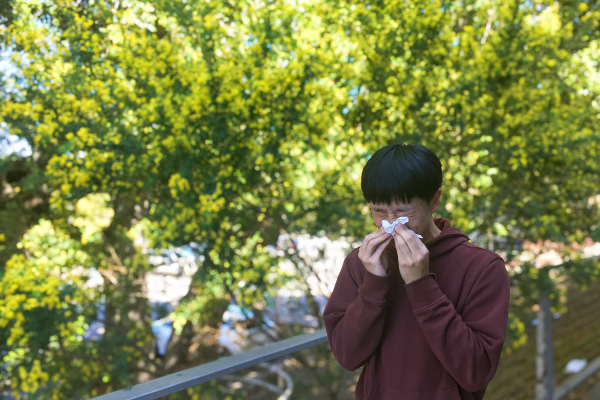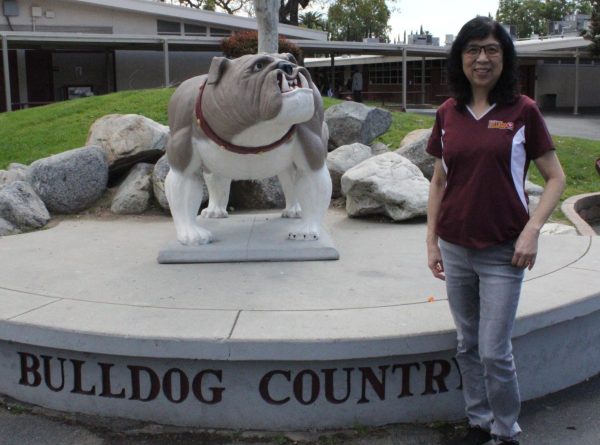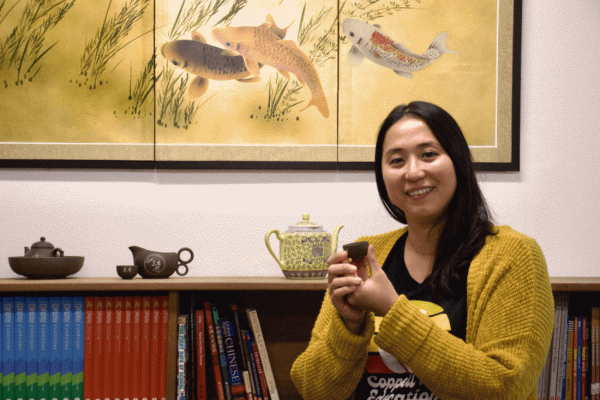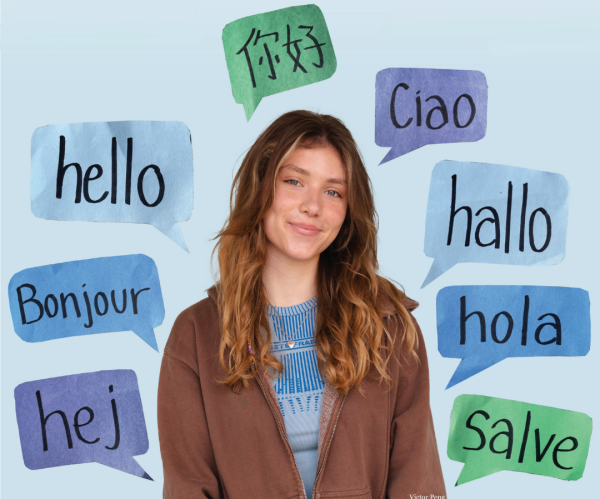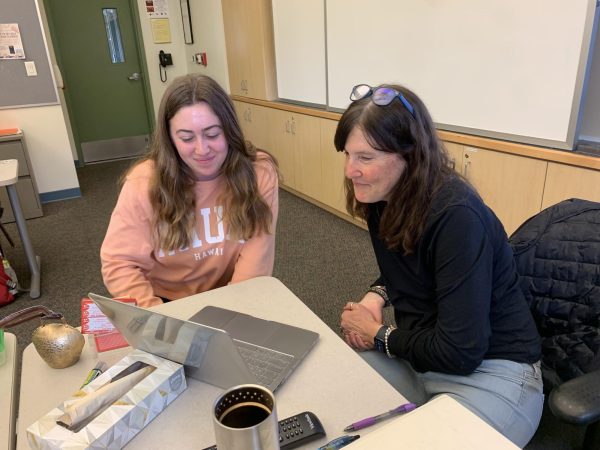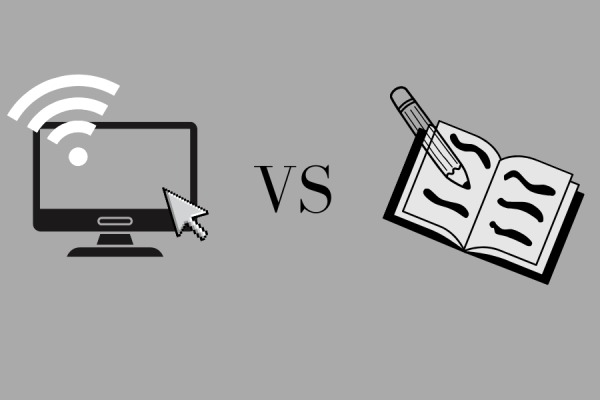“Overall, everyone just wants to be included”: creating safe spaces and increasing representation and inclusivity for LGBTQ students
Courtesy of Ileana Oeschger
Ileana Oeschger, a freshman at Kalamazoo College, has developed a website showcasing art by queer youth in Michigan and advocating for more LGBTQ+ inclusion in Michigan’s curriculum.
December 21, 2020
Ileana Oeschger, a freshman at Kalamazoo College, has developed a website showcasing art by queer youth in Michigan and advocating for more LGBTQ+ inclusion in Michigan’s curriculum. Oeschger started the project as a research paper for her class, deciding that her topic would be LGBTQ+ inclusive education. “I live in Ann Arbor, which is a pretty liberal town. However, the education requirements are pretty consistent throughout Michigan, so my identity as a queer student has still been excluded,” says Oeschger. “I chose this topic for my research project because it was something personal to me, and I wanted to work on something I was truly passionate about. I had also never really had the opportunity or the support to talk about inclusive education before, so I jumped on the chance quickly.”
Oeschger’s project became much larger when she made a TikTok calling for writing, artwork, poetry, and music from Michigan’s LGBTQ+ students. The Tiktok got over 47,000 views and thousands of comments offering their art. “I had zero expectations for the TikTok video I made in October, so I was incredibly surprised,” says Oeschger. “Everyone was so willing to help and open to sharing personal artwork and stories, I was just stunned. It was the first time I had felt the full force of Michigan’s beautiful LGBTQ+ community.”
What started as just a research paper for her class turned into a goal to showcase LGBTQ+ art and fight for change in the Michigan school system by creating a website.
Oeschger is passionate about the benefits inclusive education can have on all students. “The most important thing inclusive education can bring is understanding,” she says. “Queer students can understand more about themselves and their community. Non-LGBTQ+ identifying students can understand more about their peers, and staff can understand more about the students they need to support. Understanding builds compassion, and compassion creates change.”
Oeschger outlines the proper steps in her research paper that are pertinent to implement change. She argues that Michigan needs to pass legislation that requires accurate LGBTQ+ health education. This legislation “should clearly state that Michigan’s curriculum must cover: 1) sexual education, 2) the gender and sexuality spectrum, and 3) healthy queer relationships. Also, Michigan must require the implementation of LGBTQ+ narratives into history classes. This means schools need to add new LGBTQ+ texts to the curriculum or replace history textbooks with new additions that include LGBTQ+ history.”
As Oeschger explored the intersection between representation and Michigan’s curriculum, she composed a song that is featured on the website. “I am hoping to use this research project as a way to bring my community together and create change in Michigan’s schools,” she says. “The song is about the social pressures and difficulties that young queer people face as they navigate their identities. However, instead of raising up a white flag (symbol of defeat), during this battle, we raise up our pride flags. While the tone of the music is somewhat sad, it’s still an ode to the positive queer resistance.”
A missing piece
This issue extends to Portage Northern, where LGBTQ+ students notice the lack of inclusion surrounding their education. “In health class, any LGBTQ issue was never mentioned, same as history and English,” says junior Abigail VanderBerg. Senior Marlow Underwood agrees: “My health class never once touched upon anything relating to any LGBTQ topics, from what I remember. Similarly, no other class of mine has included any LGBTQ content or curriculum. It saddens me.”
Health teacher Christopher Andrews offers insight on the lack of LGBTQ discussion in the health curriculum. “I think the Michigan Model (which is our school board adopted sex ed curriculum) is very general when they reference relationships. My thoughts are this is not to exclude any type of relationship,” he says. “Having more specific examples of LBGTQ is being discussed I believe, updating and changing the curriculum is a long process because when there is change, each individual school has to present it to their reproductive health advisory committee to approve, then it has to be approved by the school board after that.” Recent events support Andrews’ assertion: The district Human Growth and Development (HGD) Committee is holding two public meetings on five short videos to add to the high school health class HGD unit. The public meetings will be on Thursday December 17 from 5pm until 6pm and on Tuesday January 5 from 5pm until 6pm. Curriculum modifications in other content areas are not subject to public preview and discussion.
For history, after a long, multi-year process, the state of Michigan recently passed a new set of social studies standards that might be more inclusive of the LGBTQ community. The new US History Standard 8.3.4 Civil Rights Expanded includes “the gay and lesbian communty; the Stonewall riots; … Harvey Milk (1978)…” as “examples may include but are not limited to…” (pg 116). AP also revised the Government and Politics curriculum in 2018 and the revisions include Obergefell v Hodges as an “illustrative example (not required)” in the Ideology and Social Policy Unit.
“History gives us too many stories to teach, and educators tend to gravitate toward the stories they were taught. As a society, history education has prioritized stories of power, and marginalized groups by definition do not hold power often,” says history teacher Joseph Wood. “I think as opposed to trying to figure out what topics we can squeeze into a lecture, we should be thinking about how to introduce students to the complexities and messiness of history. I do think it is important to introduce some of these topics […] as you will never explore something that you don’t know exists.”
LGBTQ students and staff agree that PN needs to be more inclusive in their curriculum and that this issue is of critical importance. “I think it needs to change. The fact of the matter is that not including inclusive education contributes to stigmatization and homophobia,” VanderBerg says. “LGBTQ-inclusive education is often withheld out of fear for clashing against the beliefs that some students may have, but homophobia and transphobia are not “just opinions.” They are beliefs that go against the mere existence of LGBTQ people,” Underwood adds. “The path to understanding, acceptance, and equality is paved by educating others; a lack of LGBTQ-inclusive curriculum means a lack of tolerance.”
Spanish teacher and GSA leader Kaitie Paynich agrees. “Our students look for representation of themselves in our curriculum – whether it’s in literature or history class – and so often it just isn’t there,” says Paynich. “So, we have to make due and try to find it ourselves outside of school or find parallels in the straight, white narratives given to us. A first step would be to educate the educators about queer issues, queer literature, and the idea that we can teach LGBTQ+ culture without talking about “sex” (since that tends to make people uncomfortable). . . There is this notion that we can’t expose kids to these ideas (even though we have students with queer parents or family members or they themselves are queer) until a certain age. The reason why has to do with another false perception – that LGBTQ+ = ‘let’s talk about sex.’ While sex does figure into the equation when we talk about ‘sexual orientation,’ being LGBTQ+ is so much more than that. It’s an entire culture – one that does not necessarily revolve around sex – and it’s an identity.”
Oeschger’s work supports Paynich’s ideas. In her research, she proposes that, “teachers and staff should be trained by qualified leaders on how to support LGBTQ+ peers, address bullying, and normalize the use of pronouns in their classrooms. Students should also go through mandatory programs that discuss the issues of homophobia, micro-aggressions, and toxic heteronormativity. GSA clubs should be formed in every school to provide a safe space for queer students. Finally, there needs to be strict guidelines for how Michigan schools can handle bullying based on sexual or gender orientation.”
Vanderberg has experienced the social fallout of a lack of inclusivity. “All of the teachers here are very inclusive, but on a personal level. It never seems to reach their lessons,” she says. “The students are a hit or miss kind of thing. I’ve been called the f slur and I’ve been told that god is going to smite me. I want things to change very badly.” Underwood highlights the lack of representation in the curriculum: “PN’s curriculum could do a lot better in terms of inclusivity. This stretches beyond the near-complete lack of LGBTQ history discussed in classes, and extends to curriculum focusing primarily on cisgender, white, heterosexual individuals—particularly men—and their works. This erases the impact of POC and LGBTQ individuals, both historical and present,” he says. “I do, however think many of the teachers at PN are inclusive, and I feel lucky to have settled into a school with such open-minded teachers and students (of which the student body is incredibly diverse).”
The GSA club helps to provide a safe space for LGBTQ+ students at Northern. “Sometimes, you just need a space to go where there are other people like you and where you know you have allies who support you unconditionally so you can just let go and be yourself,” says Paynich. “It can be really difficult (and frankly exhausting) to navigate the straight, cis world when you are not straight and/or cis.”
The need to find a better way forward
The impact and importance of representation and inclusivity in Michigan’s school is clear. “Overall, everyone just wants to be included,” Oeschger says.
Both Paynich and Oesgher describe the intersectionality of this issue: that it doesn’t just affect LGBTQ+ representation, but other minority groups. “It is the same reason we should be reading Black stories, indigenous stories, female driven stories, Latinx stories – to understand more points of view,” says Paynich. “Our curriculums are so often focused on the straight, white male narrative so exposing our students to new ways of thinking and different experiences will only help us grow into more empathetic humans.”
Underwood summarizes the heart of the issue succinctly: “Giving LGBTQ students a voice is crucial to our comfort and safety, and listening to us is the only way to create genuine, long-lasting change towards a more inclusive future.”
Students interested in contributing to Oeschger’s project can contact her via the page on the website.
This story was originally published on The Northern Light on December 18, 2020.
















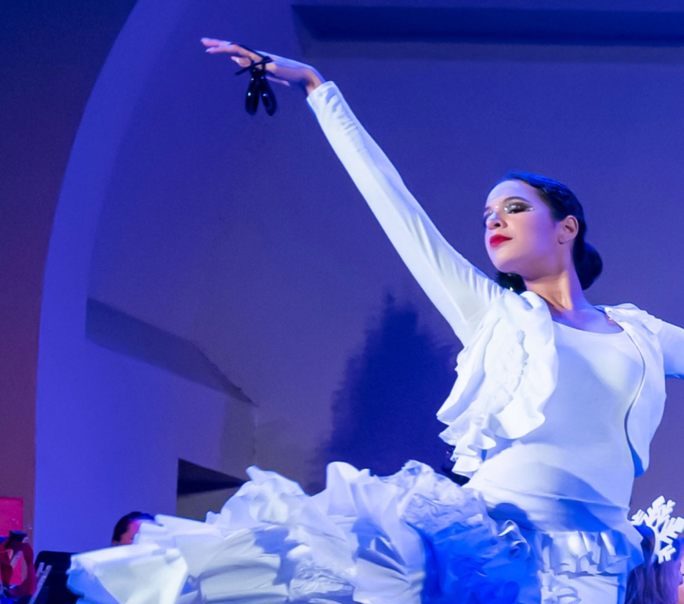
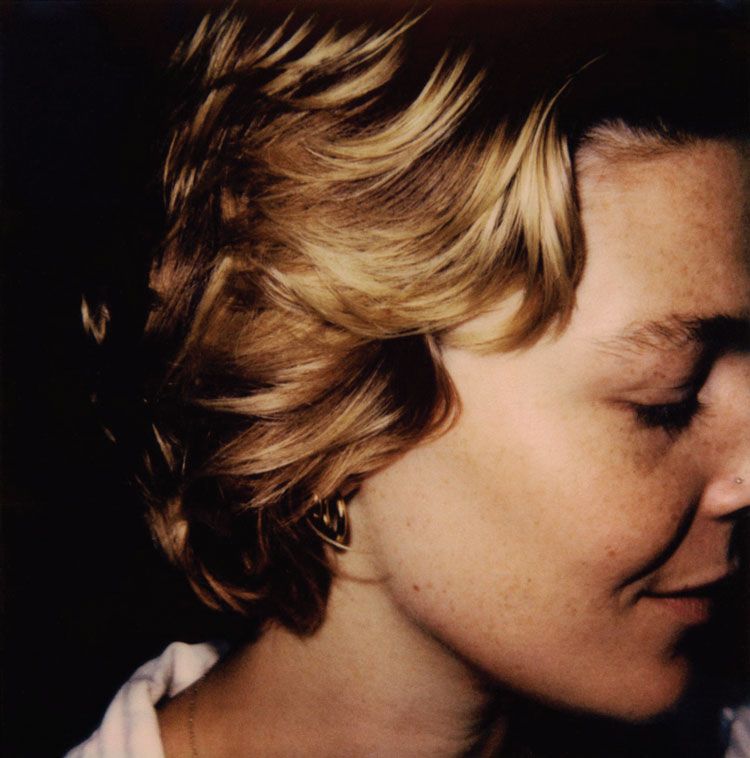













![IN THE SPOTLIGHT: Junior Zalie Mann performs “I Love to Cry at Weddings,” an ensemble piece from the fall musical Sweet Charity, to prospective students during the Fine Arts Showcase on Wednesday, Nov. 8. The showcase is a compilation of performances and demonstrations from each fine arts strand offered at McCallum. This show is put on so that prospective students can see if they are interested in joining an academy or major.
Sweet Charity originally ran the weekends of Sept. 28 and Oct. 8, but made a comeback for the Fine Arts Showcase.
“[Being at the front in the spotlight] is my favorite part of the whole dance, so I was super happy to be on stage performing and smiling at the audience,” Mann said.
Mann performed in both the musical theatre performance and dance excerpt “Ethereal,” a contemporary piece choreographed by the new dance director Terrance Carson, in the showcase. With also being a dance ambassador, Mann got to talk about what MAC dance is, her experience and answer any questions the aspiring arts majors and their parents may have.
Caption by Maya Tackett.](https://bestofsno.com/wp-content/uploads/2024/02/53321803427_47cd17fe70_o-1-1200x800.jpg)
![SPREADING THE JOY: Sophomore Chim Becker poses with sophomores Cozbi Sims and Lou Davidson while manning a table at the Hispanic Heritage treat day during lunch of Sept 28. Becker is a part of the students of color alliance, who put together the activity to raise money for their club.
“It [the stand] was really fun because McCallum has a lot of latino kids,” Becker said. “And I think it was nice that I could share the stuff that I usually just have at home with people who have never tried it before.”
Becker recognizes the importance of celebrating Hispanic heritage at Mac.
“I think its important to celebrate,” Becker said. “Because our culture is awesome and super cool, and everybody should be able to learn about other cultures of the world.”
Caption by JoJo Barnard.](https://bestofsno.com/wp-content/uploads/2024/01/53221601352_4127a81c41_o-1200x675.jpg)





